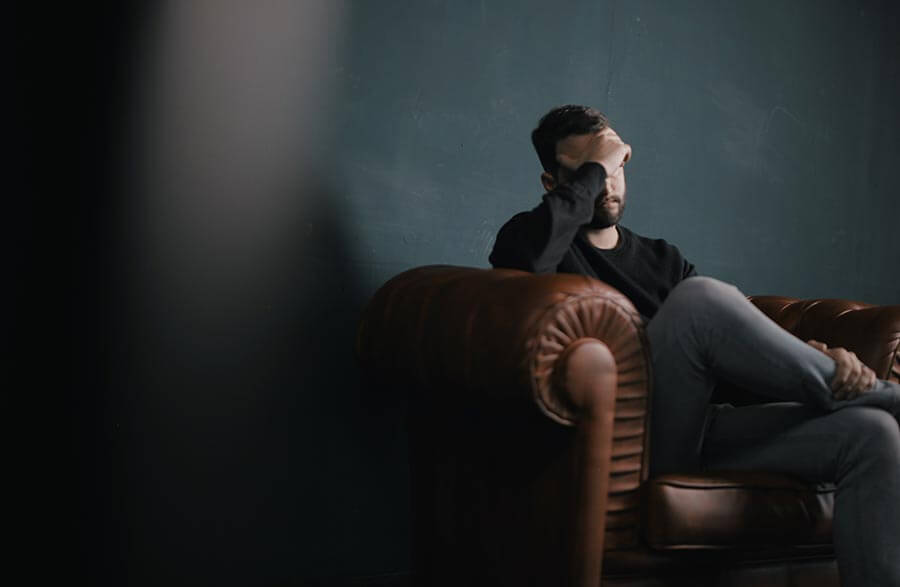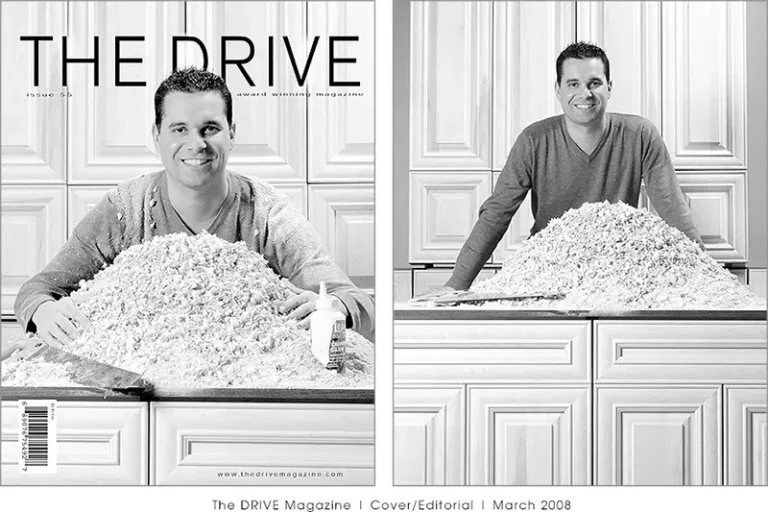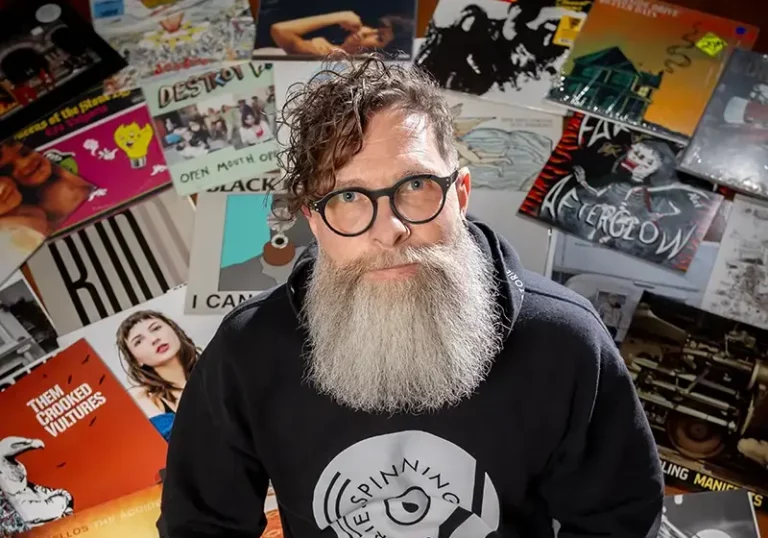Stats on Mental Illness
Mental health issues cost the Canadian economy of over $50 billion annually.[1]
1.6 million Canadians report an unmet need for mental healthcare.
7.5 million people in Canada are living with a mental health problem or illness.
Studies have shown that mental illness is the most important risk factor for suicide.[2]
More than 90 percent of people who commit suicide have a mental or addictive disorder.
Over the last 60 years, there has been a much higher rate of male (vs. female) suicide in Canada; 80 percent of suicide deaths in Canada are men, with a peak in the mid-fifties age group.[3]
Men living with schizophrenia die an average of 12 years earlier than the general population.[4]
Men who strongly identify as ‘self-reliant’ have 34 percent greater odds of reporting thoughts of suicide.[5] Men are two to three times more likely than women to have a serious alcohol use problem.
Local Resources
Community Crisis Centre
(519) 973-4435
www.hdgh.org/crisis
Transitional Stability Centre
(519) 257-5224 [email protected]
Canadian Mental Health Association
(519) 255-7440
[email protected]
Bounce Back
(866) 345-0224 [email protected]
Student Counselling Centre (U of W)
(519) 253-3000 x 4616
[email protected]
Paragon Psychological Services
(226) 221-8440 [email protected]

The Face of Men’s Mental Health
When we think of mental health, we often think of extremes. However, mental health issues come in all shapes and sizes, and the chances are likely that you or someone you know has struggled with a mental health issue at some point in their lives. Statistics in Canada have been fairly consistent for the last several decades, with one in five individuals struggling with mental illness at any given time. In the midst of the COVID-19 crisis, widespread unemployment, social isolation, and financial struggles, the rate is only expected to increase.
Despite massive efforts to educate the public, stigma and discrimination surrounding mental illness persists. This is especially the case for men who have grown up in a Western culture of male machismo and patriarchal ideology. For these men, asking for help can be challenging, even though the alternative can be terrifying and possibly deadly. The mortality rate due to suicide among men is four times the rate among women.
As defined by the Diagnostic and Statistical Manual of Mental Disorders (DSM-V), a mental disorder is a syndrome characterized by a clinically significant disturbance in an individual’s cognition, emotion regulation, or behaviour that reflects a dysfunction in the psychological, biological, or developmental processes underlying mental functioning.
Mental disorders encompass a wide array of conditions, including not only anxiety, depression, psychopathy, and personality disorders, but conditions like substance abuse, ADHD, and Alzheimer’s. While the medical model categorizes mental illnesses, the mental health continuum model views mental health as a sliding scale with positive and healthy functioning at one end, a problem-point in the middle, and disordered functioning at the far end. Viewing mental health as a continuum makes it evident that everyone has the potential to slide down the scale and experience severe distress symptoms based on genetic predisposition, trauma or abuse, social, environmental, and health factors, and resiliency or coping strategies.
Local psychologist Dr. Mohsan Beg describes depression and anger as having the same mother: hurt. For girls and women, hurt often gets turned inward and tends to manifest as anxiety and depression; for boys and men, hurt often gets turned outward and tends to manifest as anger and aggression.
Dr. Beg is the executive director, Student Health, Counselling, and Wellness Services at the University of Windsor and co-owner of Paragon Psychological Services. He says that only one-third of the patients seen at the university counselling centre are men. Given that the university population is disproportionately made up of men, this third is not representative of the actual number of men who are struggling on campus. He acknowledges that many men have been socialized that they shouldn’t show pain, and there is an immense amount of pressure on them to appear invulnerable.
Boys and men are much more likely to act out and exhibit aggressive or antisocial behaviour consistent with conduct disorders or substance abuse disorders. Men are also much less likely than women to use outpatient mental health services.[1]
The use of negative coping styles—such as misusing alcohol and drugs, socially isolating or withdrawing from relationships, concealing and ignoring negative emotions, engaging in risky behaviours, and valuing self-reliance and autonomy over professional care—has been attributed to the adherence to rigid stereotypes of masculinity in recent studies.
When men do finally get dragged into therapy or ask for help, it’s because things have gotten so bad they just can’t hide that they’re struggling anymore. As a result of the delay, they have an even bigger ditch to climb out of, and initial treatment is focused on treating the crisis before long-term coping strategies can be developed.
Dr. Robert Clark, co-owner at Paragon Psychological Services, is somewhat encouraged that more attention is being directed towards male first responders and athletes as more individuals disclose and attempt to break down the stigma. He feels that we need to look at specific populations and adjust our treatment approaches accordingly. Further, not all men like talk therapy and, as a result, more activity-based therapy options are emerging, for example, equine therapy and Men’s Sheds. Both doctors predict that we will see a huge demand for therapy at all age levels due to job loss, isolation, and reluctance to use virtual counselling platforms from home, as the first wave of social distancing measures are lifted.
[1] https://www.who.int/gender/other_health/genderMH.pdf
Implications for Employers
From an employer’s perspective, employees struggling with mental health issues can result in increased absenteeism, increased health benefit utilization, and changes in work performance, attitude, mood, or engagement level. While employers have a duty to accommodate employees who have disabilities, it isn’t always clear if an individual indeed has a disability, an ongoing condition, or a situational crisis. That is where good communication comes in. Employers are not entitled to diagnostic information for their employees; however, they are entitled to information (from the employee’s treating practitioner and the employee themselves) related to any potential side effects of medication that may impact an employee’s ability to perform their job, any accommodations the employee requires in order to be able to perform their job, and any restrictions the employee has.
Understanding and openness can go a long way to make an employee feel comfortable admitting that something is askew or asking for help. Men, in particular, tend to be more reserved when it comes to talking about personal issues like mental illness. Whether that’s due to traditional gender role stereotypes, ongoing stigma about mental illness, or some combination of the two, the fact remains that men tend to disclose much less than women. What does this mean in a practical sense? This means that owners, managers, and HR professionals need to be particularly astute to the warning signs of struggling employees. This means that they should have clear policies for sick leave, personal days, family responsibility leave, and unpaid medical leaves of absence. It means being aware that indicators of someone struggling with mental illness are not always withdrawal or time away from work, but can include hypervigilance, hyperactivity, and oppositional behaviour. It means they need to be aware of the warning signs, provide resources and support to employees, and be brave enough to have the difficult honest conversations that develop understanding.
Jeff Garton, financial advisor for Co-operators Insurance in Amherstburg, believes that our society operates in the context of the “man box” where men are conditioned from a young age to not show vulnerability or weakness. This social construct makes it particularly troublesome for men struggling with mental illness to disclose or seek help. Jeff notes that there seems to be more help out there for women than for men, so he does his best to support mental health initiatives: through his organization’s support of the Amherstburg Food and Fellowship Mission; by actively participating on the board of directors for a local fathers’ support group, and; by providing his employees with an employee assistance program (EAP) where they can receive free, confidential assistance for a variety of concerns.
Ronald Joseph D’Aguilar
When RJ, a University of Windsor student and community activist, first began experiencing challenges to his mental health, he was in his late teens and very much immersed in a culture of “men should never be incapable or admit to being incapable.” He felt that much of his value as a person was being in control of himself and his environment. So, when he required care, treatment, and support, he found it very difficult to express himself outside of his immediate family—even some of them didn’t really understand, and thought he was just “acting out” or “being rebellious.”
RJ struggles with bipolar I disorder, takes daily medication, and has attended group therapy at the Transitional Stability Centre—an interagency program delivered by Hôtel-Dieu Grace Healthcare and the Canadian Mental Health Association Windsor-Essex County Branch. He found the program helpful and would recommend it to others seeking group or individual therapy. There was a period when RJ required hospital care, and as a result, he lost the two jobs where he was employed. His schooling has also been impacted by his mental health, as he’s gone through periods of varying stability and has had to take less than a full course-load most semesters, delaying his degree completion. RJ believes that we are just at the beginning of the conversation about destigmatizing mental health and that a lot more needs to be done to educate people about what different conditions look like and how to interact in ways that are safe and compassionate for everyone involved. For RJ, frequent exercise, cognitive stimulation from learning and entertainment, as well as maintaining good nutrition and staying hydrated, are all vital to avoiding barriers to wellness.
Kyle Ball
Kyle, an IT professional, didn’t have the easiest time growing up and found himself turning to drugs to numb his emotional pain at 13 or 14 years old. He describes Percocet and oxycodone as his goldmine, making it easier to get through the day by essentially making himself a walking zombie.
By age 16, he knew he had an addiction problem, but it wasn’t until he landed in the hospital that he took action to combat his demons. Rather than seeking treatment or talking about his feelings, he self-isolated but managed to get and stay clean. Twelve years later, after an emotional divorce, Kyle has been diagnosed with major depressive disorder. Despite extreme reluctance to take medication due to his previous addiction issues, he is now going through the trial-and-error process of trying to find a medication that makes him feel better without causing too many unwanted side effects. In addition to attending weekly therapy, playing music, painting, and practising meditation and yoga, Kyle uses a journal as a means to organize his thoughts, analyze things, and examine why he’s feeling the way he is. Kyle is also sensitive to others’ needs and recalled a time when he sensed a coworker’s impending panic attack. Kyle intervened quickly, suggesting that the two perform breathing exercises together, which helped lessen the coworker’s anxiety. Afterwards, they talked, and the coworker promptly admitted that he struggles with anxiety but has never sought help because his family doesn’t believe it is an issue. It’s kind, thoughtful, authentic actions like Kyle’s that help break down stigma and let other men know that it’s okay to talk about their feelings. Kyle stresses that getting help can be a bit of a trial-and-error process. You won’t necessarily jibe with the first therapist you meet or find relief from what works for others, but the key is to keep trying and not give up hope.
Matt Salter
When Matt returned from an Army tour in Afghanistan, he thought everything was fine—until he started losing time and not remembering hours or even entire days. He couldn’t sleep for more than three hours at a time without drinking heavily first. He had terrible nightmares and panic reactions to loud noises. His concentration was suffering, as were his relationships. After losing multiple jobs, he was formally diagnosed with post-traumatic stress disorder and started a regimen of medication and therapy.
Through therapy, Matt was able to recognize that there are varying levels of being “okay,” ranging from “not being dead” to “doing well” and that he was constantly moving between them depending on whether he was having a good day or experiencing panic triggers. He sought help from the Royal Canadian Legion’s Operational Stress Injury program and also found support through a local Brazilian Jiu-Jitsu school.
Matt stresses that being able to have an open dialogue with his employer has been essential to succeeding in a work environment. He knows that he has memory issues and ensures that he documents details, so he doesn’t miss important tasks. He is appreciative that his job is considered essential, so he’s been able to maintain a sense of normalcy and routine throughout the COVID-19 crisis. Despite the potential stigma, Matt feels it’s important to speak up and ask for accommodations at work; that way, everything is out on the table, upfront, and adjustments can be made if something starts to slip.
Greg Lemay
Greg Lemay, a familiar face around Windsor, grew up feeling like he was struggling to find himself and never knew how to be comfortable in his own skin. It didn’t help that from the time he was in Grade 3, everyone in the class knew that he had to take a pill every day at school. Diagnosed with ADHD, Greg couldn’t focus on school, had failing grades, and just wasn’t engaged.
Greg acknowledges that putting on a brave face is hard when we have obstacles going on internally. As an adult, he struggled with anxiety and depression and found himself paralyzed at times by mental health and personal issues. However, even on days when it feels like the world is against him, he finds a way to move forward. Greg tries to have little wins each day—whether it’s making his bed first thing in the morning, playing soccer with friends, recording positive messages for himself, doing random acts of kindness, or FaceTiming with his eight-year-old daughter, Ashlyn. He has adopted coping strategies to “keep himself on track, stay on course, and right the ship. “Folks who are in a position of leadership shouldn’t be worried about, or fear, how our mental health is perceived. It’s okay to admit that we have problems and that we’re working through them. We should push the envelope and help those around us.” Greg is working hard and succeeding as a living example of this.
Moving Forward
The truth is that medication helps millions of people with chemical or hormonal imbalances, but there is no medication that can replace therapy from trained counsellors, help from invested friends and loved ones, or introspection and self-care.
Continuing a public conversation about mental health issues and their effect on men—and how men have found ways of coping, healing, and living with them—is the beginning of a solution. We can help to reduce the stigma for the thousands in our community who haven’t found ways to be successful, by encouraging compassionate conversations on the subject and dissuading judgmental statements about mental illness. A holistic approach can help much more than medication alone. Changing the culture to be more accepting and understanding of people who need medication can go a long way towards reducing stigma-based anxiety. Increasing the visibility of people who are dealing with issues and still being productive can help others who are struggling. All of these, together, are steps towards solving a very complex and pervasive issue.
[1] https://www.mentalhealthcommission.ca/sites/default/files/2017-03/case_for_investment_eng.pdf
[2] https://www150.statcan.gc.ca/n1/pub/82-624-x/2012001/article/11696-eng.htm
[3] https://journals.sagepub.com/doi/full/10.1177/0706743718766052
[4] https://www.inspq.qc.ca/pdf/publications/2091_mortalite_suicide_2016.pdf
[5] https://minerva-access.unimelb.edu.au/bitstream/handle/11343/197683/Masculinity+and+suicidal+thinking.pdf?sequence=3



